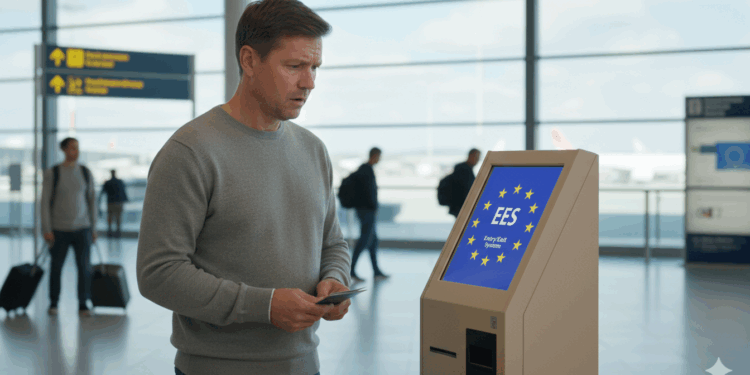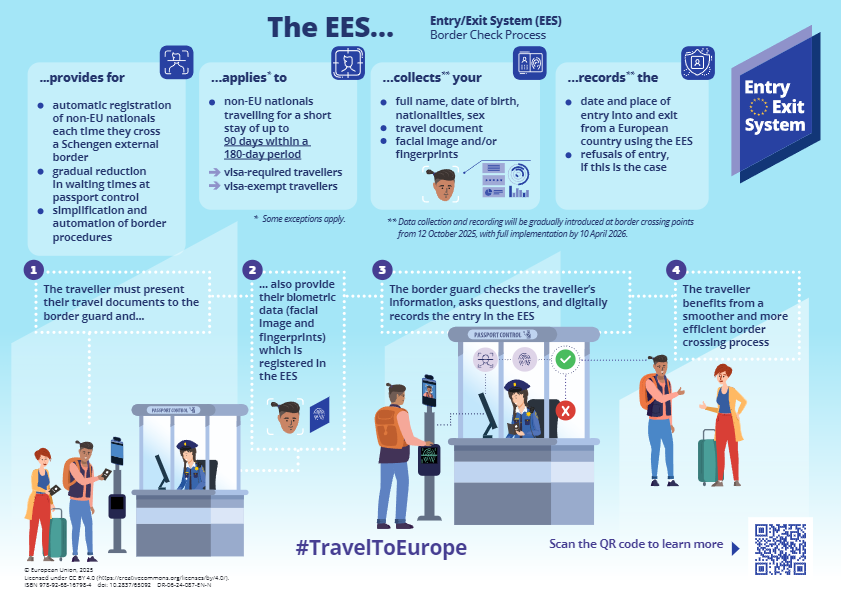EU Entry/Exit System (EES) Phase 1 Implementation: What General Aviation Operators Need to Know

The European Union’s Entry/Exit System (EES) has officially launched its Phase 1 implementation, marking a significant step in the EU’s progressive approach to border security modernization. For general aviation operators and their passengers, understanding the current impact and upcoming changes is essential for smooth operations across European destinations.
Current Status: Phase 1 Implementation
 The EES Phase 1 rollout specifically affects the border check process when clearing Border Force to enter the EU. The system provides automatic registration of non-EU nationals and applies to travelers staying for short periods (up to 90 days within a 180-day period).
The EES Phase 1 rollout specifically affects the border check process when clearing Border Force to enter the EU. The system provides automatic registration of non-EU nationals and applies to travelers staying for short periods (up to 90 days within a 180-day period).
Key Point: There are currently no pre-registration requirements, pre-flight filings, or changes to travel documents required for this phase.
What EES Collects:
- Full name, date of birth, nationality, and gender
- Travel document details
- Facial image and fingerprints
- Date and place of entry/exit from European countries
The EES Process: What to Expect
The EES follows a standardized 4-step process at participating airports:
- Document Presentation: Travelers present travel documents to border guards
- Biometric Data Collection: Provide facial image and fingerprints, which are registered in the EES system
- Digital Recording: Border guards verify information, ask questions, and digitally record the entry
- Streamlined Future Crossings: Travelers benefit from smoother, more efficient border crossing processes on subsequent visits
Ground Reports from EU General Aviation Facilities
Universal Aviation’s network of handlers across the EU has provided valuable insights into the real-world implementation of EES Phase 1:
Spain and Greece: Extended Timeline
Both Spain and Greece have postponed full EES implementation until April 1, 2026. During this extended timeline:
Current Operations (Until April 2026):
- Physical passport stamps remain in place
- Clearance location unchanged (at FBO facilities)
- Processing time remains 1-2 minutes per passenger
- No changes to tech stop requirements
Post-April 2026 Changes:
- Physical passport stamps will be eliminated
- Digital data collection will replace manual stamping
- Processing time expected to remain approximately 2 minutes per passenger
France: Le Bourget Leading Implementation
Paris Le Bourget (LFPB) is at the forefront of EES implementation with notable infrastructure developments:
Current Setup:
- Immigration authorities have deployed a specialized mobile unit equipped with computers and biometric collection equipment
- Single van serves all 7 FBOs, creating potential scheduling challenges
- Van positions ramp-side at each FBO exit for passenger processing
- Processing time: approximately 2 minutes per passenger when systems function properly
Operational Considerations:
- Currently collecting data from approximately 10% of traffic
- Technical issues have been reported, causing occasional delays
- Future plans include tablet-based equipment for more flexible operations (timeline TBD)
Italy: Staggered Rollout Schedule
Italy is implementing EES with a phased approach:
- Milan Malpensa: EES active as of the 12th
- Milan Linate and other Italian airports: EES implementation beginning on the 20th
Operational Recommendations
Based on current ground reports, general aviation operators should:
- Monitor Location-Specific Updates: Implementation timelines and procedures vary significantly by country and airport
- Plan for Potential Delays: Single processing units at some locations may create bottlenecks during peak periods
- Stay Informed on Technical Issues: Early implementation phases may experience system reliability challenges
- Prepare for 2026 Changes: Begin planning for ETIAS requirements and the elimination of physical passport stamps
Bottom Line
The EES Phase 1 rollout represents an evolutionary rather than revolutionary change for general aviation operations. While the fundamental border clearance process remains largely unchanged, operators should stay informed about location-specific implementations and prepare for more significant changes coming in 2026 with full EES deployment and ETIAS introduction.
For the most current information on EES implementation at specific European destinations, consult with your local handling agents or contact Universal’s Trip Support team for destination-specific guidance.




